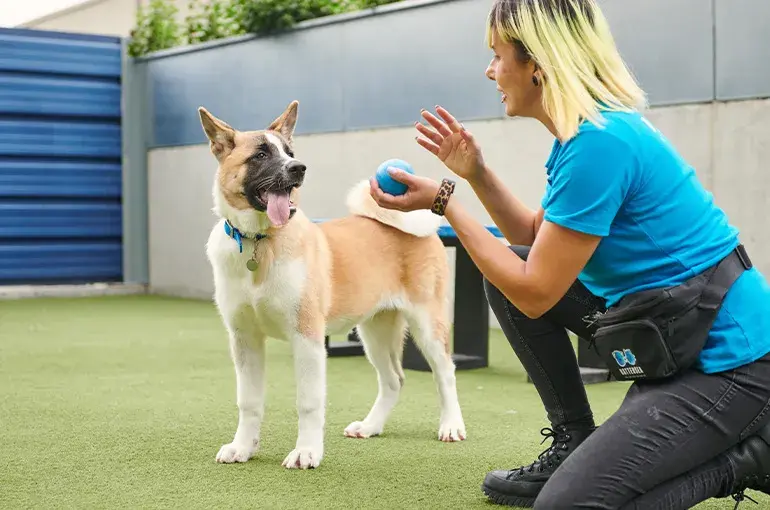
Understanding Rescue Dog Fear: A Guide for Pet Owners
Share
Bringing a rescue dog into your home is a heartwarming experience, but it can also come with its unique set of challenges. One of the most common issues that health-conscious pet owners face is understanding rescue dog fear. Rescue dogs often come from backgrounds that may have included neglect, abuse, or simply a lack of socialization, which can manifest as fear in various situations. In this article, we'll explore the intricacies of rescue dog fear and offer insights on how to help your new furry friend feel safe and secure.

The Roots of Fear in Rescue Dogs
Rescue dogs may have spent time in shelters, on the streets, or in homes where they were not properly cared for. These experiences can lead to deep-seated fears that can affect their behavior. Understanding these fears is crucial for anyone looking to adopt a rescue dog. Adoption processes often include assessments of a dog's behavior, but some fears may not become apparent until the dog is in a stable home environment.
Common Triggers of Fear
Some common triggers for fear in rescue dogs include loud noises, sudden movements, and unfamiliar environments. Health-conscious pet owners should be aware that a dog's fear response is not a reflection of their character but rather a reaction to their past experiences. For example, a dog that has been hit in the past may cower or flinch when approached unexpectedly.
Recognizing Fear in Rescue Dogs
Recognizing signs of fear in your dog can help you address the issue before it escalates. Common signs include trembling, hiding, growling, or even aggression. A dog that is fearful may also refuse to eat, which can be concerning for pet owners focused on maintaining their pet's health and wellbeing.
Body Language and Vocalizations
Dogs communicate through body language and vocalizations. A dog that is fearful may have a tucked tail, flattened ears, and avoid eye contact. They may also bark or whine when scared. Understanding these signals is essential for pet owners who want to create a supportive environment for their dog.
Approaching Fear with Patience and Care
When dealing with a fearful rescue dog, patience is key. Building trust takes time, and it's important to let your dog set the pace. Building trust involves creating a safe space where your dog can feel comfortable and secure. This might mean providing a quiet area where they can retreat and relax.
Positive Reinforcement
Positive reinforcement is one of the most effective tools in helping a rescue dog overcome fear. Rewarding calm and confident behavior with treats, praise, or play can encourage your dog to feel more comfortable in various situations. Avoid punishing fearful behavior, as this can exacerbate the problem.
Professional Help and Resources
Sometimes, despite your best efforts, your dog may require professional help to manage their fear. Consulting a veterinarian or a professional dog trainer can provide you with additional strategies and techniques tailored to your dog's specific needs. There are also numerous online resources available for health-conscious pet owners, such as the ASPCA, which offers guidance on pet adoption and care.
Joining Supportive Communities
Joining communities of like-minded pet owners can provide support and encouragement. Sharing experiences and learning from others who have gone through similar situations can be invaluable when navigating the complexities of adopting a rescue dog. Engaging with these communities can also provide emotional support as you work to help your dog overcome their fears.
Conclusion
Adopting a rescue dog is a rewarding experience, but understanding and addressing their fears is crucial to ensuring a happy and healthy relationship. By recognizing the roots of fear, using positive reinforcement, and seeking professional help when needed, pet owners can create a nurturing environment for their new companions. Remember, patience and understanding are your greatest tools in helping your rescue dog feel safe and loved.

FAQs
What are some signs that my rescue dog is afraid?
Signs of fear in rescue dogs include trembling, hiding, growling, refusing to eat, tucking their tail, flattening their ears, avoiding eye contact, and vocalizations like barking or whining.
How can I help my rescue dog feel more comfortable?
To help your rescue dog feel comfortable, create a safe space, use positive reinforcement, and let them set the pace for building trust. Avoid punishing fearful behavior and consider professional help if needed.
Are there resources available for health-conscious pet owners?
Yes, resources such as the ASPCA provide guidance on pet adoption and care. Online communities and professional trainers can also offer valuable support.
This article contains affiliate links. We may earn a commission at no extra cost to you.
